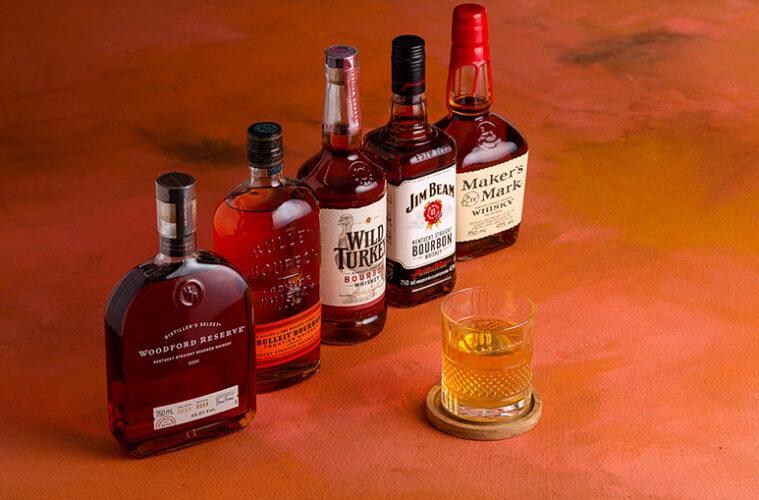September is National Bourbon Heritage Month in the US, celebrating America’s ‘Native Spirit’
Bourbon is distilled from at least 51% corn with rye, barley and wheat making up the rest of the blend, and is aged in charred oak barrels, which give it its sweetness and amber colour. Bourbon is distilled at 160 proof and aged before being bottled at a minimum 80 proof in the US, which means it contains a minimum of 40 percent alcohol by volume.
 Bourbon’s roots are linked to the migration of settlers west from the original colonies in the 18th and 19th centuries. In Bourbon County in Kentucky, corn flourished, and scores of small-scale farmers began distilling their own whiskey, stamping the county name ‘Old Bourbon’ onto the barrels for shipping. Bourbon as we know it today has been distilled in the US since the 1800s and is still usually associated with the American south, particularly Kentucky.
Bourbon’s roots are linked to the migration of settlers west from the original colonies in the 18th and 19th centuries. In Bourbon County in Kentucky, corn flourished, and scores of small-scale farmers began distilling their own whiskey, stamping the county name ‘Old Bourbon’ onto the barrels for shipping. Bourbon as we know it today has been distilled in the US since the 1800s and is still usually associated with the American south, particularly Kentucky.
However, Bourbon does not need to be produced in Kentucky, it can be produced in any US State. In 1964, the American Congress recognised Bourbon Whiskey as “a distinctive product of the United States.”
It is so popular in the US that it is even a theme in songs and literature. In South Africa too, growing numbers of adults appreciate authentic American Bourbon for its allure, history and drinkability.
 Why is Bourbon so enduringly popular? Aficionados and barmen will tell you the spirit’s warm, robust flavours, golden colour and smooth mouthfeel make it a classic. Offering a huge range of releases from super-premium to entry level, American Bourbon has something to offer every whiskey palate, from sweet, smooth spirits through to bold, robust drinks. The proportion of corn to other grains impacts Bourbon’s flavour: a high proportion of corn and wheat typically makes Bourbon sweeter and lighter, while Bourbon with a high rye content will be spicier with a full-bodied flavour. Ageing, barrelling, blending, limestone levels in the water, and even the climate in which the Bourbon is aged in, all impact the flavour, resulting in notes ranging from toffee, caramel and vanilla to nuts, spice, tobacco, fruit and leather.
Why is Bourbon so enduringly popular? Aficionados and barmen will tell you the spirit’s warm, robust flavours, golden colour and smooth mouthfeel make it a classic. Offering a huge range of releases from super-premium to entry level, American Bourbon has something to offer every whiskey palate, from sweet, smooth spirits through to bold, robust drinks. The proportion of corn to other grains impacts Bourbon’s flavour: a high proportion of corn and wheat typically makes Bourbon sweeter and lighter, while Bourbon with a high rye content will be spicier with a full-bodied flavour. Ageing, barrelling, blending, limestone levels in the water, and even the climate in which the Bourbon is aged in, all impact the flavour, resulting in notes ranging from toffee, caramel and vanilla to nuts, spice, tobacco, fruit and leather.
Bourbon’s complex blend of flavours make it excellent to sip neat, on ice, or in cocktails. It pairs well with hearty red meat-based meals such as steaks, roasts and braais, and even with chocolates and desserts. While American whiskey distillers insist that Bourbon should be enjoyed responsibly in ‘any way you like it’, connoisseurs tend to drink it neat and bartenders favour it as a base for cocktails.
Follow @usdistilledspiritssa on Instagram and @USwhiskeyZA on Facebook.


